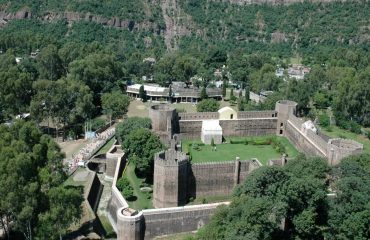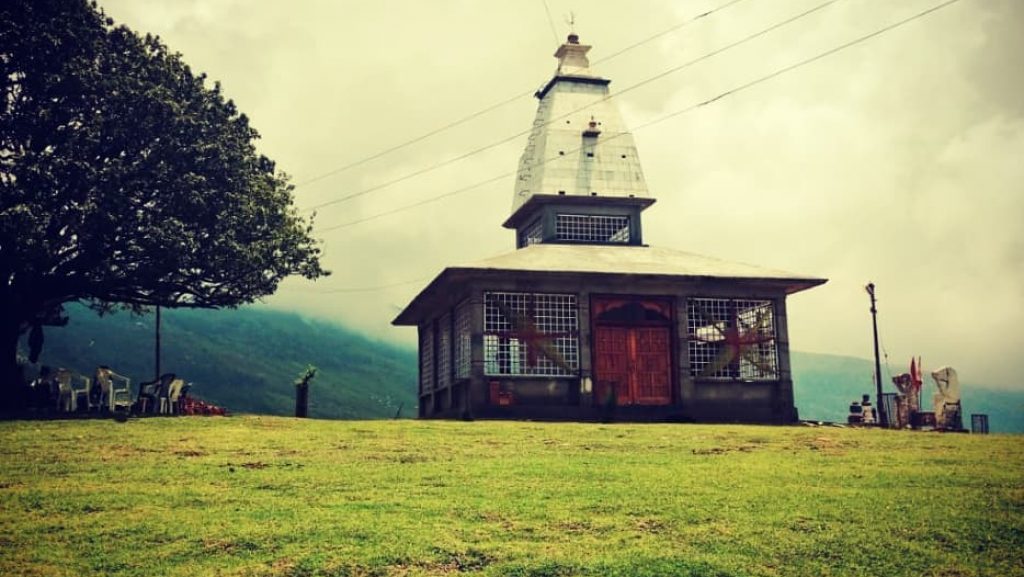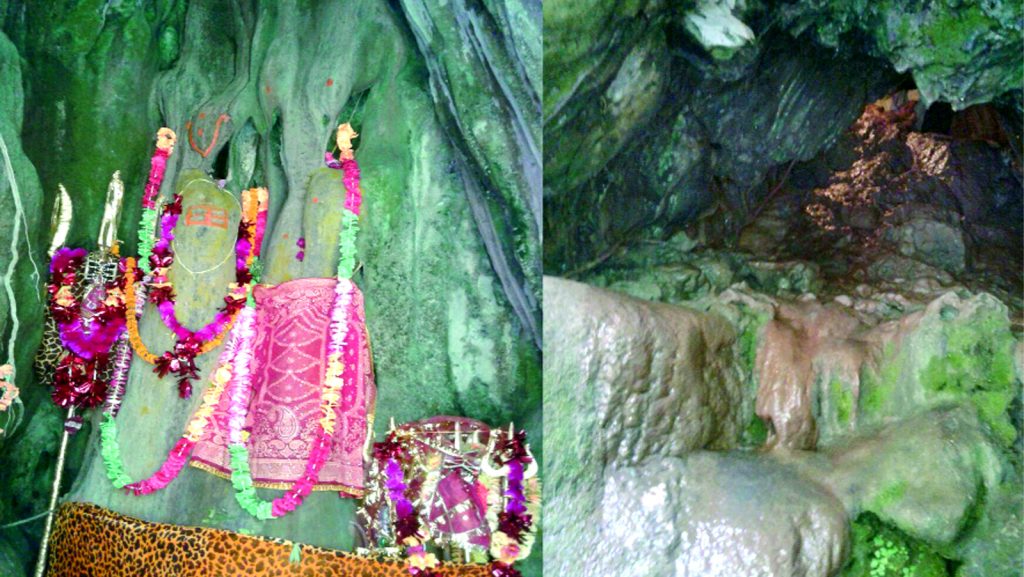
Sudh Mahadev and Mantalai
Sudh Mahadev, a revered Shiva temple, is 42 km from Patnitop and 112 km from Jammu. Legend says Goddess Parvati worshipped the 3000-year-old Shivling here after bathing at Gouri Kund. The temple houses a black marble statue of Shiva and Parvati and preserves Lord Shiva’s trishul. Pilgrims gather on Sawan’s full moon night for a grand festival. The sacred Devak stream originates here and vanishes into rocks downstream. Visitors can also see local wooden sculptures. Accommodation is available at Tourist Sarai (J&K Tourism) and Dharamshala (Dharamarth Trust). A few kilometers ahead, Mantalai (1450m), surrounded by deodar forests, is believed to be where Shiva married Parvati. The site features a Shiv temple and an unfinished complex by Swami Dhirendra Brahmachari, including a tree-shaped house and an airstrip. A 5 km trek to Naina Devi offers stunning mountain views.

Ramnagar Fort
Ramnagar is situated on the left bank of Kud river in the mid Himalayan range, about 40 kms west of Udhampur. Ramnagar also served as the capital of old Bandarlta State. During the reign of Maharaja Ranjit Singh, it came under Sikh rule and Raja Suchet Singh.Ramnagar Fort is believed to have been built by Raja Suchet Singh, who died in 1844. His wife performed sati nearby. There is a Samadhi of Maharani at the site where the sati was performed. The fort was renovated and undertaken by the Archaeological Survey of India in 1972. It is a protected monument of the Archaeological department.

Devika
Udhampur is also a well-known city for the Devika River, which is also known as the sister of the River Ganges. In the Nilmat Puran, written in the 7th century by Nela Muni, it is mentioned that the Devika River is a manifestation of the mother Goddess Parvati herself to benefit the people of Mader Desha, covering areas between River Ravi and Chenab. The River Devika appeared on Shiv Ratri. Lord Shiva himself remains side by side with Uma, manifesting in the form of Shiv Lingas at 8 places alongside the Devika River. The river presently runs under its sandy surface. In Devi Mahatmya, it is mentioned that there is no need to perform Japa or rituals to obtain spiritual benefits at this pilgrim center—simply touching or bathing in the Devika waters is enough. Water emerges by digging about a foot into the sand bed. Cremation on the sands of Devika is considered as meritorious as cremation on the banks of the Ganges at Kashi.

Krimachi Temple
Krimachi is a small village in Udhampur district, Jammu & Kashmir UT, located 12 km north of Udhampur on the Udhampur-Lander road and 67 km from Jammu. The temple complex consists of five temples and two shrines, situated in a green valley at 730 m elevation. The area is drained by two rivulets, Birunala and Krimachi. According to tradition, Krimachi was a halting place on the Jammu-Kashmir route via Banihal. A contemporary of the Pandavas is believed to have laid its foundation. Another tradition states that Krimachi was the capital of Bhuti, a principality under Daya-Karan, a ruler of Kashmir. Historian Diwan Narsingh Dass Nargis notes that King Daya-Karan’s descendants ruled for centuries as the “Bhutials”. The last ruler, Himmat Singh, was defeated by Maharaja Ranjit Singh, and Bhuti was given to Raja Gulab Singh in A.D. 1834, merging it into the Jammu Kingdom.The Krimachi temples are built on an elevated terrace of Biru Nala.

Shankri Devta Temple
Shankri Devta Temple is situated on a hillock in village Meer, Block Panchari, surrounded by meadows, lofty mountains, and lush green forests. Meer and Panchari are connected by a pucca road from Udhampur town. The Shankri Devta Mela is organized by the District Administration in April/May every year. The Youth Services and Sports Department, Udhampur, conducts rural sports competitions like Kabaddi, Tug of War, and Weightlifting to entertain people and showcase students’ talents. The District Administration ensures drinking water, healthcare, electricity, sanitation, and transport facilities. Various government departments set up stalls to educate people about state and central schemes, while local traders sell Jalebi, Pakora, bangles, and toys. The J&K Indian Style Wrestling Association, in collaboration with the Local Dangal Committee, organizes wrestling competitions featuring renowned wrestlers from different regions.

Moungri Cave
In ancient times, Moungri was known as Sonara, meaning “land of hundred water springs”. In Dogri language, water springs are called Naaras. According to legend, it was the abode of Nag Devta (King of Snakes), with hundreds of natural stone water springs, some of which still exist today. Another legend, linked to the Kansar Shrine, tells of a small stone shrine of Lord Shiva discovered by a local villager. When the shrine was removed and thrown into the Kansar stream to clear land for agriculture, calamity struck the villagers. Realizing their mistake, they retrieved the shrine and built a temple on a nearby hilltop, which still stands today. The Moungri Cave Shrines, located in Moungri-Sonara (Panchari Block, Udhampur District), are associated with Shri Swatantra Dev Kotwal. The Shiv-Parvati Cave Shrine features a naturally formed nine-and-a-half-foot-high rock Shiv Lingam, making it a revered spiritual site.
